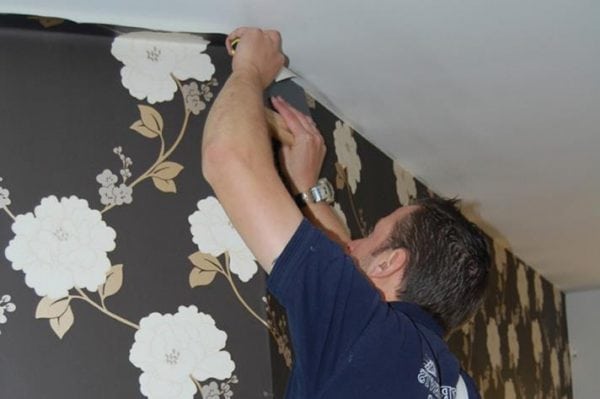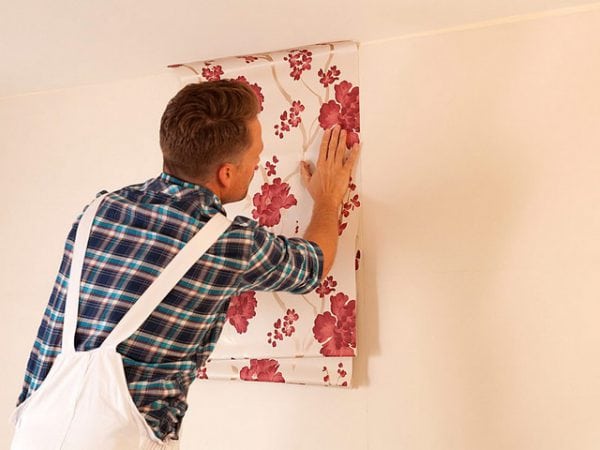Wallpaper remains one of the most popular decoration materials. To ensure good adhesive properties of the surface, it must be prepared before gluing the rolls. However, often the walls are covered with a layer of old paint, which is not always easy to remove. About how to glue wallpaper on paint, we will tell in this article.
- Type of coating
- Work Instructions
- Preparatory work
- Wallpapering
- Features of acrylic surfaces
- Sticking on oil paint
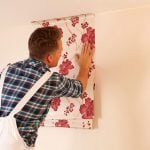
Type of coating
In order to properly paste the wallpaper, it is important at the very beginning to decide on the type of paintwork.
There are two most common types of paint:
- Oily. It has a strong odor, has a good water-repellent effect. After setting, a protective layer forms on the surface, protecting the surface from the negative effects of the external environment.
- Acrylic (water emulsion). Acrylic paints and varnishes are odorless, distinguished by water-repellent qualities, good adhesion. After application, acrylic penetrates deep into the surface structure.
To answer the question of whether it is possible to glue wallpaper on paint, it is necessary to have an idea of the hardness of the coating. All paint that is easy to remove must be removed, otherwise there is a risk that the painted layer will fall off later along with the wallpaper.
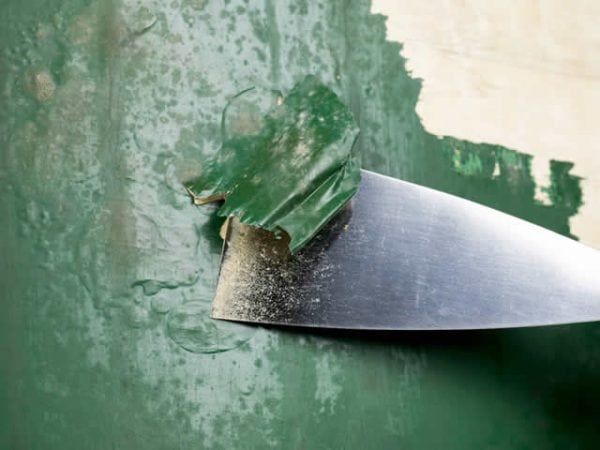
Work Instructions
Sometimes there are difficulties with determining the type of paint material, but there is a need to stick wallpaper on the paint without priming the surface.
In this case, it is recommended to use a high-quality adhesive and any type of wallpaper, except vinyl. The surface should be perfectly clean, but even in this case, high-quality gluing cannot be guaranteed.
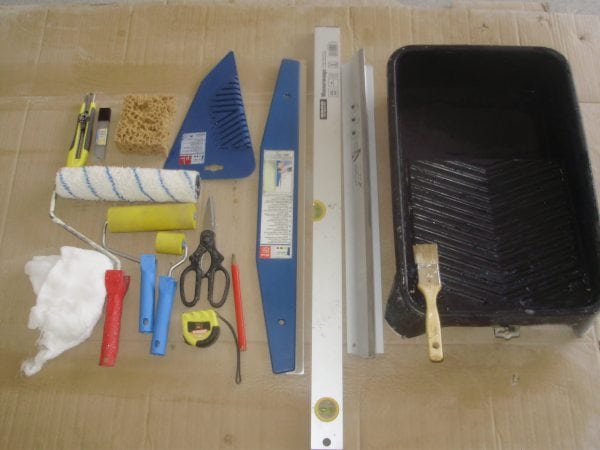
- wallpaper rolls;
- adhesive composition;
- foam roller;
- capacity;
- hot water;
- primer;
- Scotch;
- putty knife;
- putty;
- sandpaper.
Preparatory work
The best quality result can be achieved only when applying the primer to the paintwork. After processing the surface with a primer, apply a layer of putty in order to level all the irregularities.
For many years, the old coating absorbs all kinds of unpleasant odors. This especially applies to the kitchen and to rooms in which a lot of smokers. Walls in damp rooms are often affected by fungus or mold. Gluing rolls on such surfaces without preparation is not recommended.
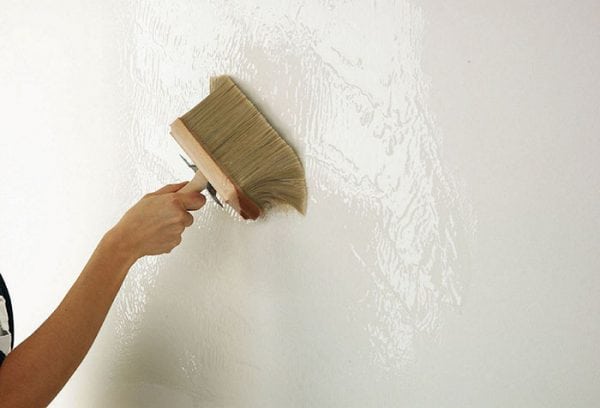
- We cover the wall with a roll of thermal insulation.
- Glue the plastic mesh on top.
- Apply a layer of plaster.
- Install and fix the drywall sheet.
Wallpapering
Regardless of the type of coating, when gluing wallpapers, it is recommended to adhere to a number of general principles:
- If there is a picture on the sheets, then when gluing different rolls, the fragments of images should be evenly joined.
- We purchase wallpapers with a small margin (usually 1 roll is enough).
- For some types of wallpaper, not every glue is suitable. Before applying glue, carefully read the instructions from the manufacturer and adhere to its recommendations when performing work.
- Work will go easier and faster if there is an assistant.
- From the roll we cut off the strip and put it on the floor from top to bottom with a pattern. Next, evenly apply a layer of adhesive on the wallpaper.
- The glue-treated strip is lifted around the corners and glued to the wall. Wallpaper is glued from the window and from above. Carefully press the sheet to the surface. At the same time, we distribute the gluing efforts from the middle of the sheet - to the edges and down. Using a cloth or roller, remove excess glue from the surface.
- The switches and sockets found on the wall are initially sealed, and then we release them with the help of neat slots.
Features of acrylic surfaces
Before you stick the wallpaper on the paint, prepare the surface. To do this, apply a mixture of primer and solvent to the wall with an old paint layer. This composition will allow you to change the structure of the painted surface, forming small defects on it. Such cavities will improve the adhesive properties of the coating, so that the wallpaper will better stick to the wall.
When the wall dries, we again process the surface, but this time only with a primer. A layer of highly diluted adhesive can be applied. We begin gluing rolls only after the surface has completely dried.
Read more detailed instructions for sticking wallpaper on water-based paint.
to contents ↑Sticking on oil paint
Despite the fact that, as mentioned above, oil paint can be chipped off with layers, this is a very tenacious material. In addition, the oil coatings are very smooth, which seriously impairs their adhesive qualities and complicates the sticking of rolls.
Wallpaper for oil paint is glued only after preparatory measures. There are two ways to paste wallpaper on coatings treated with oil paint:
- First, we treat the surface with coarse-grained sandpaper, and then apply the primer mass and PVA glue in a 1: 1 ratio to the coated surface.
- Using a spatula, we make furrows in the paint layer: a 5 cm channel every 20 cm of the surface. In the resulting furrows, we put the putty flush with the painted coating. Thus, we get areas with good adhesion, which will facilitate high-quality wallpaper bonding. It is believed that similarly sticking wallpaper on oil paint is less effective than on a sanded coating. However, this method is applicable if for some reason it is difficult to clean the entire surface with emery.
Note! In the case of oil paints, it is recommended to use twice as much wallpaper glue as compared with PVA glue.
So, wallpaper can be glued to a layer of old paint. However, you can’t completely do without preparatory measures, since otherwise it will not work to glue the wallpaper to the wall with high quality.

